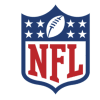2024 NFL Draft: Pick-by-pick analysis for Day 3, Rounds 6-7
- Round 1
- Rounds 2-3
- Rounds 4-5
- Rounds 6-7
The third day of the 2024 NFL Draft has begun. Eric Edholm is providing analysis for each player chosen in the 6th and 7th rounds, detailed below.
NOTE: Only trades agreed to after Day 1 began are reflected below.
ROUND 6

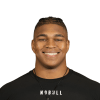
Rouse’s run blocking outperforms his pass protection. Despite this, the Sooners favored him over former five-star recruit Cayden Green in the position of left tackle last year. Rouse has significant experience in this role and has an ideal reach, however, he has primarily only played as a left tackle and is somewhat awkward in open areas.


Lee is a talented athlete who approaches his sport with a professional, unpretentious attitude. However, what is his optimal position? His skills may be best utilized in a 5-technique role where he can engage tackles and create chances for his teammates, provided his average arm reach does not limit him.


Laumea, who has experience playing both right tackle and right guard, is a skilled run blocker with notable athletic abilities. However, his reach is not as extensive as it could be. To shield him against proficient pass rushers, it may be beneficial to transition him to a full-time position inside.

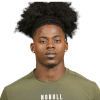
Dial, with his considerable length, has managed to intercept numerous passes over the past three years. He has the potential to become a versatile player in the secondary, given his experience in various positions.

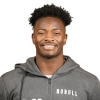
I’m a bit surprised the Chargers didn’t take a back before this, but Vidal has a chance to join the RB rotation for Jim Harbaugh. Vidal’s profile reads similarly to Blake Corum, so it’s easy to see why Harbaugh might view him favorably.
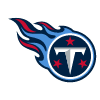
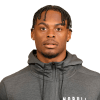
It felt like Jackson was among the leaders in Senior Bowl practice receptions. Interestingly, I felt he was underused at Tulane, as Jackson has good quickness to uncover and make people miss as a smaller-framed slot receiver. He and teammate Tyjae Spears are reunited in Nashville.


Muasau reminded me a bit of former Vikings LB Kentrell Brothers, a short but stout hitter and playmaker around the line of scrimmage whose coverage deficiencies are a bit worrisome.


Washington’s smaller frame may not have made him suitable for every team, but in my view, he should have been drafted earlier. His speed positions him as an excellent fit in Miami, where he could serve as an ideal fourth or fifth receiver and a threat on returns.

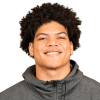
On the opposite end of the spectrum height-wise from Malik Washington is Wilson, who will immediately be among the tallest receivers in the NFL at 6-foot-7. He’s sort of a TE-WR tweener, lacking the speed of a wideout and the strength for a tight end, but you may call him a weapon — possibly in the red zone.


McClellan is a powerful runner who showcases remarkable toughness and excellent ball security, with only one fumble in college on almost 400 touches. However, he is a single-faceted runner on a team that is already well-stocked with running backs.


Washington’s impressive pro day performance cemented his position as a draft pick. Though he doesn’t particularly excel in any one area, he appears to be a dependable possession receiver with innate route-running abilities.


Regarding pro days, Hill completed a 40-yard dash in 4.45 seconds at a weight of 216 pounds. His lower weight probably limits him to playing as a nickel backer on defense, as he wasn’t a full-time starter during his college career.
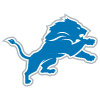
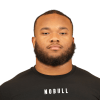
Wingo, a small-scale 3-technique with mediocre career outputs, was not anticipated to be available at this stage. He boasts solid intangible skills and experienced substantial rotation during his time at LSU, not to mention the persistent coaching changes he had to adapt to. He might certainly prove to be a surprise as a rotational contributor.




Palmer’s size and velocity could potentially make him more successful in the NFL than in college. He possesses the ability to make significant plays, however, his talents have been slow to mature.


Despite his size limitations, James was considered a prospect for the third to fifth round, indicating strong value. He is most recognized for permitting the fourth-and-31 reception to Alabama, however, James has the capability to perform well in this league.


Milton’s bazooka arm figured to make him a late-round flier, but I didn’t have him landing in New England after the Patriots took Drake Maye with the third overall pick. Some teams have toyed with the idea of turning Milton into a Logan Thomas-like TE conversion.


McLachlan has significantly progressed as a player since his time at Southern Utah, even becoming an NFL draft pick. Although he is not particularly large for his position, his length and adequate speed make him a potential candidate for pass-catching.


Watts possesses the necessary length to potentially play as a zone corner for the Steelers, or alternatively, he could be tested in the safety position where he previously trained during the East-West Shrine Bowl. His future position remains uncertain, yet his height, weight, and speed make him a promising prospect.


The Rams clearly are throwing numbers at the defensive line, hoping that a slew of young depth can overcome the loss of Aaron Donald. Davis is a respected team captain who made his mark at Clemson and might be able to overcome his physical shortcomings to enter the DT rotation.


Logue, a player for the two-time champion Bulldogs, often found himself overshadowed by the abundance of talent in Athens. Despite his production not being substantial (1.5 sacks in over 50 college games), his length is exceptional.


A few years ago, McMorris made a name for himself with a four-INT season at San Diego State. He ended with a strong final year at Cal. However, his average skills could potentially prevent him from securing a starting position.


Boyd may not excel as a playmaker, but his significant size and formidable strength could offer him an opportunity to become an early-down nose tackle. He presents a tough, dependable character with impressive stamina.
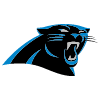

If you’re over 300 pounds and can run a sub-5.0 40-yard dash, you’re likely to be drafted. Crumedy may not have impressive production, but his maturity and experience could provide him an advantage in battling for a roster spot in Carolina.


Abraham comes from an NFL family background and has demonstrated excellent performance in college, along with impressive athletic abilities. Although he is another small-sized nickel cornerback, a position that is well-represented in this class, Abraham could potentially be a perfect fit for a practice-squad position in Indy.


Glover is a stereotypical developmental Offensive Tackle prospect. His movement skills are average but he has excellent length and grip strength. He showed promising ability to finish, even though it was against less competitive opponents.


Our second specialist. Reichard is extremely accurate from 50 yards in, and he delivered a clutch 52-yarder in the Rose Bowl. With the new kickoff rules, Reichard’s lack of booming leg strength might not be a problem, and playing more than half his games indoors also helps.


Grable, a converted tight end from Jacksonville State, has emerged as a reliable left tackle at UCF over the past two years. He’s an impressive athlete with notable length and the potential to be developed into a center, despite still learning the intricacies of playing on the O-line.

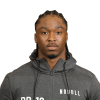
Jordan, a former sprinter, didn’t perform as well as expected at the combine. His smaller physique may affect his capacity to handle a substantial load, yet he provides a valuable variation for Houston’s zone-run scheme.
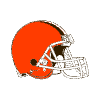

Watson has better short-area quickness and reaction skills than his range. His off-field issues and age limited his appeal, but Watson will have a chance if he stays focused.


Jerrell possesses an impressive, yet subtle, athletic ability that merits further development. However, he would require time to adapt to the significant increase in competition compared to what he experienced at Findlay College. There’s also a possibility that he may not have the necessary reach to effectively play in the outer field.
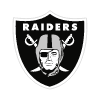

Laube has gained somewhat of a folk hero status at the Senior Bowl, captivating fans with his personality, agility and exceptional pass-catching skills. In a single game against Central Michigan this year, he managed to receive 295 yards, proving he has the potential to develop into a reliable third-down asset in the passing game.


The kickers are arriving. Karty has significantly enhanced his accuracy in his last two years and has authentic range up to the high 50s. There’s potential for him to be the top kicker in this class, something the Rams desperately require, given their need for consistency in that position.
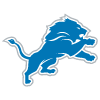
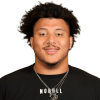
Mahogany’s tape is hilarious, watching him dispatch defenders left and right, even if that overzealous style can get him in trouble at times. He needs refinement but will land with one of the best OL coaches in the NFL and was just outside my top 100 prospects. The Lions’ strong draft continues.
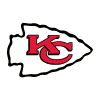

The Chiefs have been successful with their late-round DB selections in recent years, and Hadden could be their next hidden gem, barring any health or deep speed issues. His performance was impressive last season for the Vols when he was needed.


We’ve quickly moved onto our third kicker. Among the three, Little arguably has the best leg strength, capable of hitting beyond 60 yards. However, his inconsistencies, which were evident during the combine, might make him unreliable if he has trouble in crucial late-game situations.


Whittington, a typical Les Snead pick, was never highlighted at Texas, mostly due to injury and a change of position from running back. However, he is a playmaker with the tenacity and talent to succeed. He’s an exciting player to develop.

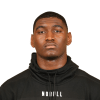
Evaluating Johnson is complex due to his lack of significant development progress. However, his resilience and strong work ethic made him a favorite within the program. His rush skill is sufficient enough to warrant an opportunity.


He has played every position except center at Washington State and USC. Ironically, his shorter stature may necessitate a shift to center in the NFL. He would be a perfect fit for a practice squad.

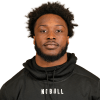
Surprisingly, Flournoy was present at the Senior Bowl where he outperformed several larger-school corners by consistently catching short and intermediate passes. His speed may be underrated, but it appears that Flournoy may have reached his peak as a prospect.


Limmer was overwhelmed a few times when matched with Texas’ massive T’Vondre Sweat in Senior Bowl one-on-ones, but Limmer is tough-minded, competitive and might be better than a few centers who were drafted before him.


I suppose if there’s a Brock Purdy-esque candidate in this class, it’s Leary. I didn’t love his tape last season, and he might have peaked as a sophomore (sound familiar?). His arm talent gives him a chance, but Leary needs to be more accurate on throws most NFL QBs make consistently.


Hardy’s ability to return might be the factor that maintains his position in the league. Though he lacks the mass and strength for a full-time defensive role, his sub-4.4 speed is always attractive in a DB.


Klein, who has 55 college starts and good length, could potentially succeed in Tampa. However, his stiffness may limit him to being only an inside blocker.
ROUND 7

This 6-foot-7, 301-pound Brit, complete with 35-inch arms, caught the attention of scouts when he ran a 4.81-second 40-yard dash at South Florida’s pro day. Despite being something of a project, his unique athletic abilities could make him a fantastic discovery with a bit of development.


JJB, a perfect choice for camp competition, is an average athlete with a bit of stiffness. However, his performance improved during his super senior year, demonstrated by his return of a blocked kick for a touchdown last season.
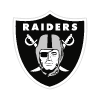

In recent years, the Air Force has seen a few of its players drafted after a long hiatus. Taylor has the potential to make it either as a box safety or a special teams contributor.


Anthony gradually progressed from Shepherd College to Liberty, and finally to Ole Miss, where he secured a starting position in his fifth college season. Though not a top-tier athlete, his high aggression and keen football instincts ensure he makes a significant impact.

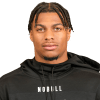
Jerry Rice’s son and Caleb Williams‘ go-to guy figured to go a few rounds higher than this, but it’s possible scouts felt there was more development needed in his game. With the Chargers, there are WR jobs open for Rice to make the roster early on.

Davis, who has only one career interception from 2019, may not have outstanding playmaking ability, and his size could potentially limit his role. However, he has the ability to run at a 4.44-second 40-yard dash and brings significant experience to the table.


A year ago, he competed against Luther Burden from Mizzou in the season opener, where he made his only interception of the season. Although Harden is not exceptionally fast, he could be a good match for Cleveland.


His draft stock was negatively affected by a leg injury. While Samac has difficulty handling speedy interior rushers, he excels in the running game.
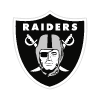

Devonshire, despite his size limitations, is a swift and resilient competitor. Although he never held a full-time starter position in college, he demonstrated a strong performance in ball production over the last two years.


Jurgens likely needs to succeed as a center, considering his less than ideal power and movement abilities. He’s a center who uses a bump-and-steer style and relies as much on his intelligence as on his physical abilities to win.

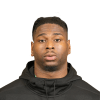
Bell was a highly versatile athlete, stepping into the running back role at South Carolina due to injuries. However, his best shot at success in the league lies in his potential as a “move” tight end, a position better suited to his smaller frame.


Two years ago, he was playing at Southwestern Assemblies of God, meaning the jump to NFL level competition will be quite substantial for him. However, his aggressive and spirited style of play makes him a fascinating prospect.

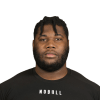
Thomas, a former high school tight end, has effectively transitioned to the position of left tackle in college, a position he will likely assume in the NFL. He is a raw talent with sufficient potential worth investing in.


Laulu’s length and agile athleticism are definitely assets, though he may require a year to build up strength and mass.


Vele, at 26 years old, is one of the older prospects in this class, having spent two years on an LDS mission. However, his physical attributes, including a height of 6-foot-4, long arms, sub-4.5 speed, and impressive jumping ability, make him a promising developmental target for jump-ball situations.

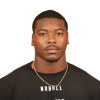
Identifying the appropriate method for Cole is crucial, given that his lack of bulk limits his ability to manage full-time interior tasks. However, his unique characteristics, particularly his length, make him an exciting Round 7 gamble.


Lee can move with impressive agility, reaching the second level with no difficulty. However, he may not be able to withstand the force of top-tier power.


The ex-Wyoming star had an impressive final season with the Trojans, recording 11 tackles for loss and forcing four fumbles. His draft stock, however, suffered due to poor testing results. His play style is relentless, continuing through the whistle, and he has the potential to perform as a rotational end.


Ezirim, a converted D-lineman, has two years of experience playing OL. His impressive size could potentially benefit him greatly, provided that the Saints are willing to patiently support his development.
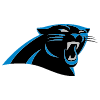
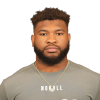
Barrett’s small stature may be a challenge due to his lack of reach, but his aggressive style of play is commendable. Despite his size, he is a formidable hitter.


Washington’s smaller stature probably made some teams overlook him, particularly after he clocked a 4.5 in the 40-yard dash. However, his ability to make big plays on offense and contribute to special teams should not be underestimated. Washington may be the kind of player who manages to maintain his spot in the league.
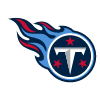

Williams, a tall and rangy athlete who played more as a deep safety than a linebacker, will now be tested in the latter role. His unique size and abilities could potentially make him an unexpected standout.
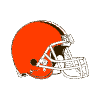
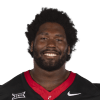
Briggs may be a stockier defensive lineman, yet his rapidity in gap shooting is an attribute that will aid him. He is mature with a professional attitude, but he must stand out from a congested defensive line group in Cleveland.

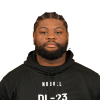
Rogers may appear blocky and rigid, but his stability in the run game makes him difficult to displace. He has the potential to succeed as a run-blocking interior defender.


If it’s me, I am drafting Pratt before both Jordan Travis and Devin Leary, and the Packers aren’t afraid to keep investing in QB talents. From the Green Wave to Green Bay, Pratt is good enough to push Sean Clifford to the side and become Jordan Love‘s understudy — perhaps as soon as this year — with his cool, calm, patient approach and quality accuracy.
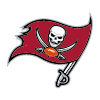

Culp surprised many when he clocked a 4.47-second 40-yard dash, despite his 230-pound physique which is likely to restrict his role significantly. Nonetheless, Culp’s performance improved every college season and he possesses unexplored potential as an H-back.

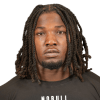
Harris may consistently face challenges with superior reach, but his tenacity as a rusher, coupled with his relentless attitude, can often prove frustrating for his opponents.
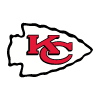

The product from Holy Cross predominantly played as a right guard during his college career. However, in the last few months, he has been training to be a center for the NFL. This could potentially provide him with the opportunity to secure a spot as a backup or practice squad player in Kansas City.

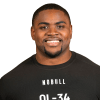
Last year, he served as Michigan’s starting left tackle, a fact that speaks volumes. However, the Texans have introduced Henderson as a guard, a position he primarily occupied during his time at Arizona State. His physical reach, agility, and game temperament elevate him beyond the typical seventh-round draft pick.


Kane established himself as a dependable starter at Purdue, gaining recognition for his strong tackling skills and causing three fumbles over two years. However, his limited ball skills reduce his attractiveness as a Defensive Back.

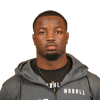
Bethune has been setting the tone for UCF and FSU defenses over the past few seasons. His shorter stature may pose a problem, but he performs well in coverage and is a strong hitter. He may just need some time to seize his opportunity.
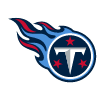

Harrell, as a linebacker, possesses a wide frame, rush abilities, and a dominant mentality. He exhibited a stellar performance in the national title game, which could potentially secure him a unique role as a sub-package defender.


Jim Harbaugh has another player from Michigan. Johnson was seldom highlighted in Michigan’s run-focused system, but he stood out as a blocker and an occasional receiver for big plays. Despite his inconsistent hands, Johnson could potentially establish himself in L.A.

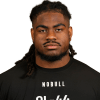
Leveston is a hulking college left tackle who might be moved to the right side, or perhaps to guard. I suspect Cooper Beebe helped make Leveston, an older prospect, look better at times, but he’s experienced enough to find a job in the league.

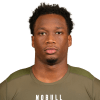
King’s name may be spotted in a few August mock drafts, but his stock has been steadily declining. This is due to his inability to replicate his 2022 performance, his subpar athletic testing results for his size, and some losses at the Senior Bowl. However, as a seventh-round pick, taking a chance on King could be a worthwhile risk.


Gargiulo, a transfer from Yale, has experience playing center, guard, and tackle, but he excels most when positioned inside. He possesses intelligence, competitiveness, and a significant reach.


Key’s length is notably interesting for a DB, and he performed commendably for Bama after transferring from UAB. However, his limited long speed will likely confine his NFL role to box-safety duties.



